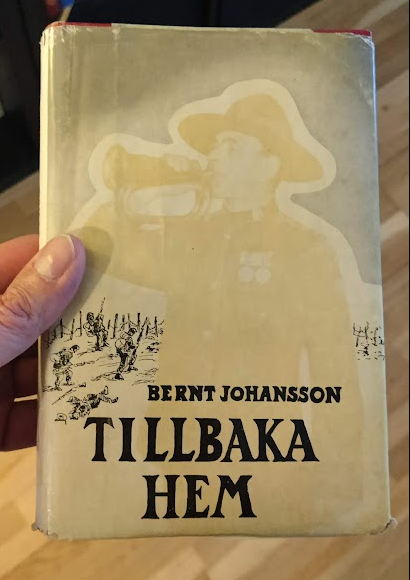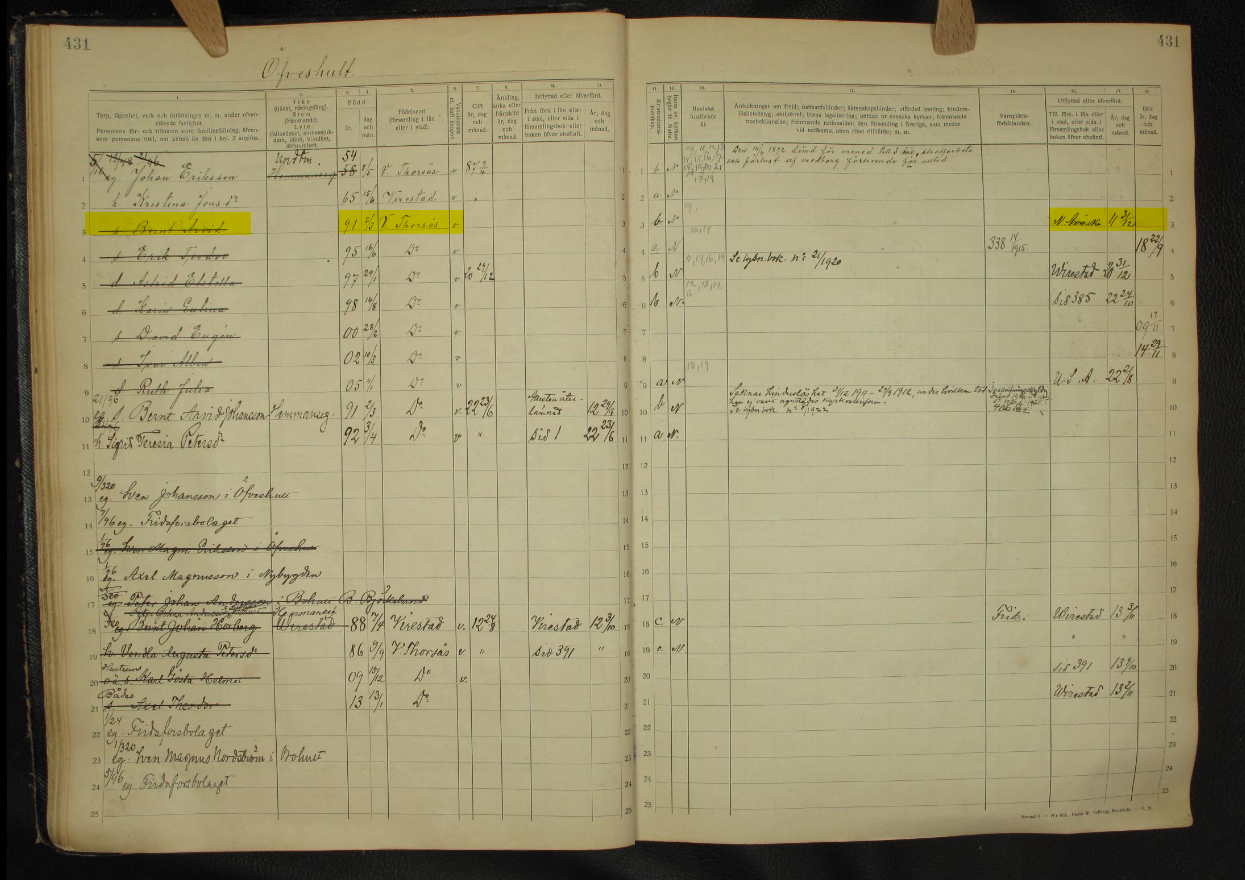I have just arrived back to Sweden from my second, amazing, trip to New Zealand. The trip went very well, and the settings in New Zealand was very well organized by Wendy, which made the time over there fruitful and a nice combination of research and well needed recreation for both of us.
Those trips has made me more and more interested in the the Swedish connections to New Zealand, and I have realised that there are a lot more connections than I initially have understood.
In the mail the other day I received a book that I ordered, about Swedish emigration to New Zealand. A very interesting book indeed, by the Swedish Author and former Ambassador in Wellington, Sten Aminoff. (1918-2000) “Svenskarna i Nya Zeeland – Den svenska emigrationen till 1940”. (1988)

It turned out that I wasn’t the first Swede to New Zealand. 🙂
The book describes the first early immigration, from mainly 1877 to 1940, the reasons behind, mentioning the “Push and Pull” factors, and then a register of most of the almost 5000 Swedes who emigrated during the period mentioned above.
It also mention the censuses, the anglification of the surnames, the naval traffic between Sweden and New Zealand.
A lot of the facts connects to my own research, and I could also find the names of those Swedish soldiers who fought for New Zealand forces in WW1, and it turned out that I have found them all in my research. The interesting part will now be to continue to find more Swedish connections to WW1, looking into the descendants of the immigrants, who were born in New Zealand, and fought in WW1. During my latest trip I discovered some more soldiers, who were sons to Swedish Immigrants, and it will be interesting to see if I can find more of them.
I so wish I had found this book before I went on my latest trip, as we went through a lot of the places mentioned in the book.
The first Swede
The first Swede who is believed to have put his feet in New Zealand was the sailor Sven Sjögren, who was a sailor on a American Whale Catcher which anchored in the Banks Peninsula in Akaroa, outside Christchurch, around 1829. I visited Akaroa in January 2023.



The story tells us that Sven sold a rifle to the Maori chief Te Waaka-Rapa, and in return Sven received a Necklace of Greenstone. The trade made it easier for the Chief to defend himself from the, from their perspective, “evil” Chief Te Rauparaha. The trade also included the daughter of Te Waaka-Rapa, Hinahina, as a bride. Hinahina followed Sven back to Sweden, but tragically she died from smallpox, in Sweden.
The Necklace was sold by a relative Sven, in an auction house in Wellington, in 1972, but was later brought back to the museum in Akaroa.

The first Swede who became naturalised in New Zealand was Charles Hopkinson. His Swedish name in not known. He was the owner of a hotel in Dunedin in 1840, and became naturalised in 1854. He later on became a “squatter”, a sheep farmer.
Another Swede, still at this date, quite famous name in New Zealand, was Charles Suisted, born in Fryksände, Värmland, Sweden, in 1810, as Carl Eberhard Sjöstedt.
He arrived as a Naval Captain with his british wife to New Zealand in 1842, from Launceston, Tasmania, Australia. He became a famous sheep farmer on the farm “Goodwood”, and he also owned the “Barret’s Hotel” in Wellington. The mountain “Mount Charles” close to Palmerston on the South Island is named after him. Carl died, age 49, and left 9 sons and 1 daughter. It is believed that more than 300 descendants to Carl is living in New Zealand and Australia today.
When Carl returned to New Zealand in 1859, after some time in Great Britain, he arrived as a passenger on, believed to be the first Swedish passenger ship to enter a New Zealand harbour, the “Equator”. The ship was loaded with expensive equipment for the new hotel, after the first one was burned down, and some other goods from Sweden.
Six swedish sailors from the “Equator” jumped ship in New Zealand.
There we have the connection to my research, about the Swedish soldiers in the Australian and New Zealand forces in WW1, which shows that most of them were sailors who jumped ship and started their new lives before joining the Army. Some of them payed the ultimate sacrifice and are today buried in Belgium and France.
The soldiers
On my recent trip I collected more information about the Swedish soldier Oscar Backman, who fought for New Zealand in WW1, and sadly died from suicide, and he is today buried in Belgium. You can read more about Oscar in the Article by Wendy Maddocks here.



The research continues
My next step is to widen my research and try to find more information about the descendants to those Swedish immigrants who decided to join the New Zealand Armed Forces, and to fight in WW1.
During my recent trip I visited three of those soldiers, today mentioned on the War Memorial in Ashburton, south of Christchurch. Those were the Nordström brothers, who today are commemorated on memorials in Belgium, and still considered to be Missing in Action, and the soldier John Polson (Pålsson) who today is buried on the Sanctuary Wood Cemetery in Belgium.





In addition to the above mentioned soldiers I also discovered another Swedish name in the village of Kumara, east of Greymouth, on the West Coast of the South Island.
It turned out that the soldier of the Swedish Immigrant Fredrik Ludvig Lindbom, his son Arthur William Lindbom, was born in Kumara. He fought for the New Zealand Forces in WW1, and was Killed in Action April 14th, 1918, and he is today commemorated on the Messines Ridge Memorial south of Ypres in Belgium. I will visit his name this summer.



My experiences from my latest trip to New Zealand has opened my eyes for Swedish immigration, but also to the facts that there are probably more stories with Swedish connection to New Zealand and WW1, which will be very interesting to study more in detail, to find more stories like the one above.
Imagine what life can bring. The interest for WW1 history connected me to Wendy, and that has brought a huge amount of knowledge into my life, and our excursions on the WW1 battlefield will continue this summer. Looking very much forward to that.
Lest we forget.









